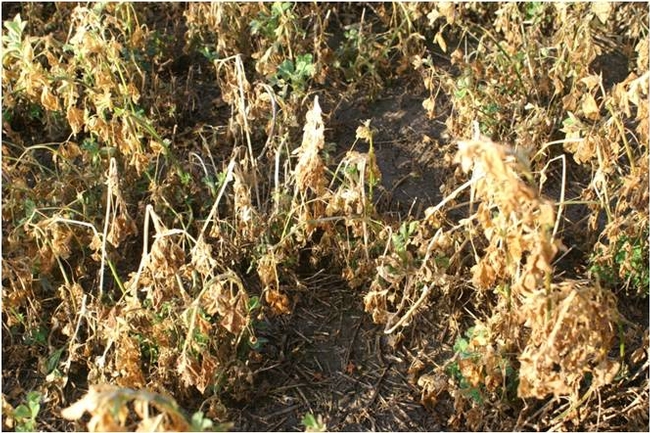We’ve had some pretty low morning temperatures lately in the San Joaquin Valley. How does alfalfa react to that?
Established Plants 
Cold damaged leaves will initially looked water-soaked and the stem tips will lean over like a “shepherd’s hook.” With time, damaged tissue will die and turn tan or light brown. The partially dead or entirely dead stem usually remains upright. With a “light” frost” (30-32 oF) there may be no damage.
It has intrigued me that the visual effects of frost damage on alfalfa can vary so much from field to field and within a field. This is because there are a lot of microclimates even within one field. Soil moisture, soil temperature, amount of canopy, differences in elevation, and air movement are some of the factors that influence the temperature in one spot versus another. Also, air temperature slightly above the soil surface is often colder than at ground level explaining why sometimes taller alfalfa has symptoms but short alfalfa does not. (As a side note, I observed this a few years ago when a springtime frost damaged corn: the leaves higher above the soil surface on taller corn were damaged while the lower leaves on the same plant and leaves on shorter corn were not!) Remember, in your fields the temperature may have been lower than what the newspaper, TV and internet report.
Seedling Plants
It doesn’t help to worry about seedling damage because worry won’t help. Wait at least 5-7 days after the cold spell to evaluate your stand. By that time it should be obvious which plants won’t make it.
Alfalfa and Sclerotinia stem and crown rot I have looked at established fields that have had frost and Sclerotinia damage. It can be hard to tell them apart. In both cases stems or areas on the stem are dead. In the case of frost or cold injury, the damaged areas are tan to light brown in color and the stem generally stays firm or crisp. With Sclerotinia, the part of the stem that was infected is more whitish than tan in color. It is also soft and can easily be flattened when rolled between thumb and fingers. If you can feel a lump in the infected area of the stem, look to see if it is a sclerotium from the Sclerotinia fungus.
In older reports from the eastern US, authors suggested that after infecting alfalfa the Sclerotinia fungus may become inactive in the plant until continual moisture (such as fog) or a hard frost occurs. Then the fungus is stimulated to colonize the plant. It will be interesting to see if after this cold spell (and especially if we get some prolonged periods of fog), Sclerotinia becomes more widespread than it has been so far this season. (For more discussion on Sclerotinia stem and crown rot of alfalfa see the blog from the archives for Nov. 27, 2012).
